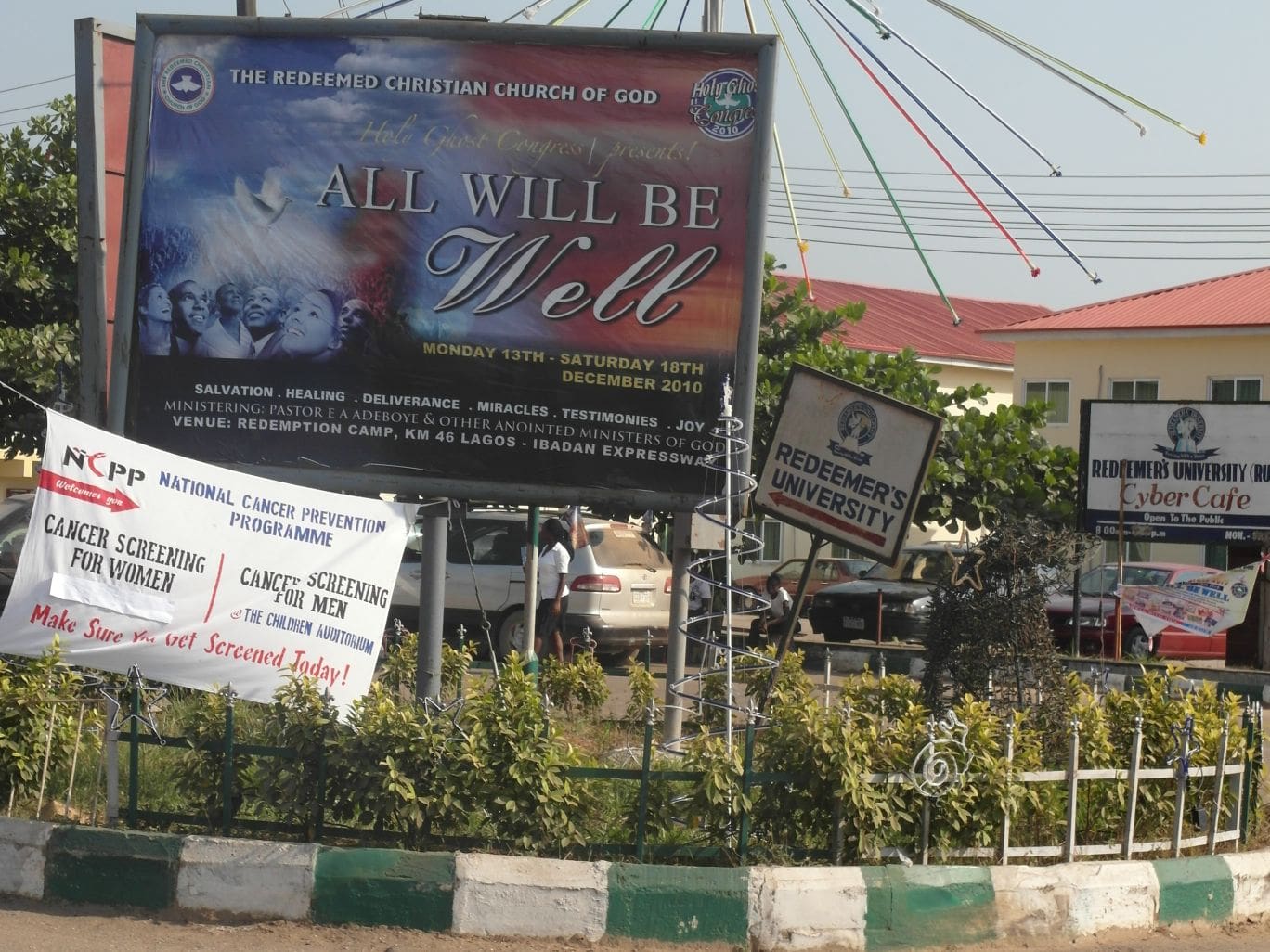
Stephan Lanz 2010
Redeeming Urban Spaces:
The Ambivalence of Building a Pentecostal City in Lagos, Nigeria
Using ethnographic material from the largest prayer camp in Nigeria, sociologist and historian of religion Asonzeh Ukah describes the interdependence between religious faith in redemption, prosperity theology, and the (sub)urban infrastructure managed by the camp.
Lagos, the Mother City
In order to place in context the emergence, development, and character of the Redemption Camp of the Redeemed Christian Church of God (RCCG), located on the outskirts of Lagos, it is important to understand Lagos itself. Originally called Eko, the Portuguese first visited the city in 1472 and renamed it Lago de Curama. Lagos is a city of 3,577 square kilometers, of which, 787 are covered by lakes, creeks, and lagoons. Lagos is home to twenty municipal governments and more than eight different tertiary institutions. Of the eight major seaports in Nigeria, three are located in Lagos, making the city the economic hub of Nigeria.These are the ports of Apapa, Tin Can Island, and RoRo. In addition, there are two lighter terminals in Lagos: the Kirikiri Lighter Terminal and the Federal Lighter Terminal. Eighty percent of all Nigeria’s imports and exports take place through Lagos. The city was the seat of federal power from 1914 to 1991, when the capital of Nigeria switched to Abuja. If Lagos’s proximity to the Atlantic Ocean has shaped its economic and cosmopolitan character, its political character has been built over the last seventy-seven years by its dual status as a distinct political entity (state) and federal capital. Because of Lagos’s strategic location and the concentration of wealth there, it was the site of low-level conflict between the federal government and the state government. The long-running war of attrition resulted in its almost complete neglect and decay.
Before 2007—when a new and visionary state government started its urban renewal programs—Lagos was the city of marginal government presence and extremes: a high concentration of individual wealth but also unimaginable squalor; abysmal public infrastructure but a plethora of private luxury cars; spectacular gated suburbs but littered with slums, noise, dirt, and dust; an unusual concentration of churches and mosques but the cesspool of corruption and low-level disorder.
Much like everything else in Lagos, the size of the population is a contested statistic between the federal and the state governments. It is generally accepted however, that the population is somewhere between 18 to 20 million inhabitants, making it the most populated city in sub-Saharan Africa, and putting it on the same pedestal with Mumbai, India. Of the twenty-seven major cities in Nigeria, Lagos is the most populated; with a human density of 8,000 persons per square kilometer, it is one of the most densely populated cities in the world. By 2015, Lagos will be home to about 23 million inhabitants, according to a United Nations projection.
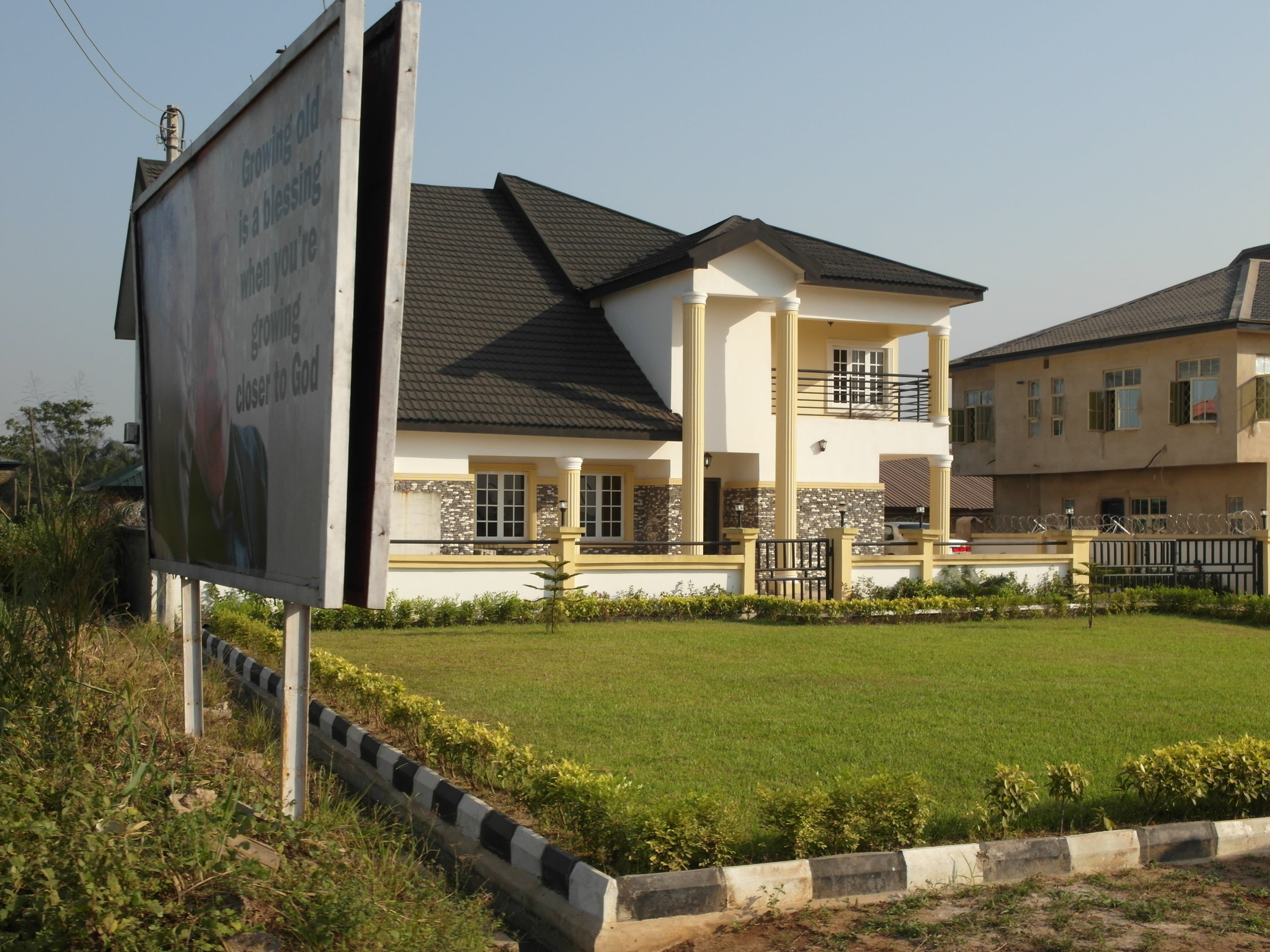
large
align-left
align-right
delete
Located forty-two kilometers outside Lagos, the history of the RCCG camp begins in this city. Metaphorically—or rather strategically—named “The Redemption Camp,” it is arguably the largest physical environment dedicated to the production, circulation, and consumption of religion in Africa. The camp is a primary ritual facility that draws several million worshippers each year; it houses a university, several dormitories and guesthouses, a massive auditorium, measuring nearly one kilometer by 750 meters at its widest, five banks and other financial institutions, and state-of-the-art real estates. Originally conceived and designed from Lagos to redeem Lagos and be everything that Lagos is not, the camp is a daughter city to the mother city of Lagos. Since its establishment in 1983, the paradox or unanswered question has remained, how does an apocalyptic city such as Lagos—between 1983 (when the camp was established) and 2007 (when the present administration of the Governor of Lagos, Babatunde Fashola, initiated a massive and ambitious urban renewal process)—produce a Redemption City such as the RCCG camp? Something that many scholars and commentators have ignored is that the camp is a product of the madness, corruption, and fury of Lagos; just as a child must carry its parents’ DNA, so also the RCCG prayer camp carries its “parents’.”
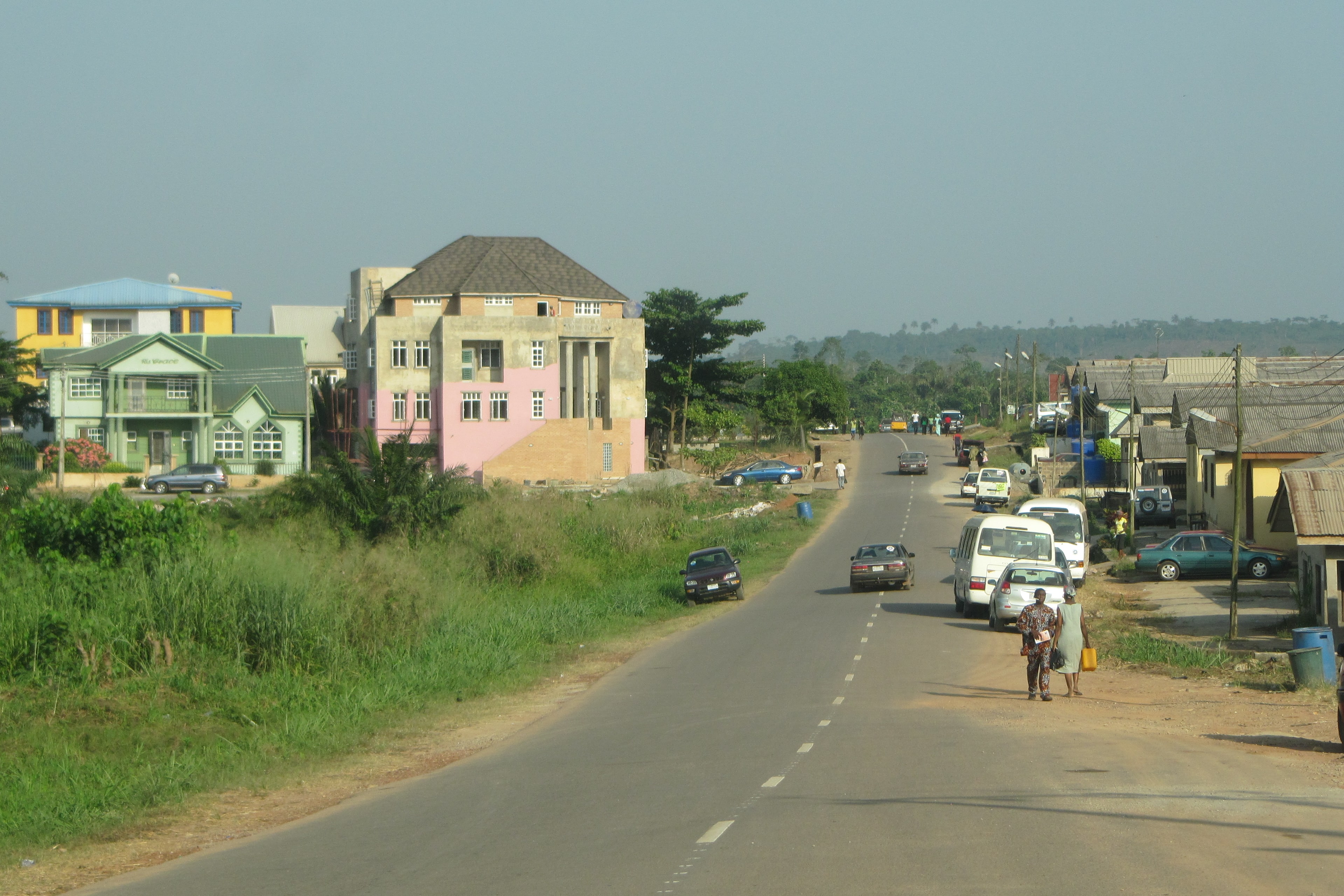
large
align-left
align-right
delete
Cities and urban spaces are the focus of numerous recent studies; they attract increasing attention in the contemporary period, not simply because they constitute unique experiences in modernity and its many manifestations, but also because they are concentrations of ever-growing human populations and economic resources.Xiangming Chen et al., Introduction to Cities: How Place and Space Shape Human Experience. London: Wiley-Blackwell, 2013, pp. 6f. They are loci of power in all its manifestations. The African city has also received scholarly attention in an attempt to understand its role in the processes of globalization and post-colonial modernity. Frequently, however, the African city has been characterized in the scholarly and popular literature as a site of “unregulated growth, limited opportunities for gainful employment in the formal economy, severe environmental degradation, lack of decent and affordable housing, failing and negligent city-management, and increasing inequalities.”Garth A. Myers and Martin J. Murray, “Introduction: Situating Contemporary Cities in Africa,” in: Martin J. Murray and Garth A. Myers (eds), Cities in contemporary Africa. Hampshire: Palgrave Macmillan, 2007, p. 1. In African Cities: Alternative Visions of Urban Theory and Practices (2011), Myers calls for a different way of explaining the root causes of what some claim is an urban crisis in Africa. The call to de-Westernize urban theory, particularly in relation to Africa, is crucial to the way in which African cities will be characterized in the future; different characterizations need to be based on the lived experiences of city-dwellers themselves rather than on the (often vague) practical knowledge of urban theorists. It is in this sense, that the postulation of a “fundamentalist city” by Nezar AlSayyad and Mejgan Massoumi is relevant to the study of the role of religion in reconfiguring African urban spaces in contemporary times.Nezar AlSayyad and Mejgan Massoumi (eds), The Fundamental City? Religiosity in the Remaking of Urban Space. London: Routledge, 2001; and Nezar AlSayyad and Mejgan Massoumi, “Religious Fundamentalism in the City: Reflections on the Arab Spring,” Journal of International Affairs, vol. 65, no. 2 (2012), pp. 31‒42. The “fundamentalist city” paradigm postulates that, “religious movements transform into fundamentalist ones, employing tactics of control that reshape the life and form of cities.”AlSayyad and Massoumi, “Religious Fundamentalism in the City,” p. 32. From the initial intervention of the British in the affairs of Lagos, religion has consistently produced a series of spatial shockwaves that influenced and are still influencing the process of urban restructuring. The conquest of Lagos in 1852 was partly instigated by British Christian missionaries on the pretext of introducing “civilization” and legitimate trade. But the contemporary growth of Pentecostalism in Lagos is re-establishing new religious communities, redefining boundaries, and reinvigorating spiritual alliances and religious practices within the city. Pentecostalism is spurning new urban practices of visuality and space making in Lagos.Asonzeh F.-K. Ukah, “Roadside Pentecostalism: Religious Advertising in Nigeria and the Marketing of Charisma,” Critical Interventions: Journal of African Art History and Visual Culture, no. 2 (Spring 2008), pp. 125‒41; and Asonzeh F.-K. Ukah, “Branding God: Advertising and the Pentecostal Industry in Nigeria,” Liwuram: Journal of the Humanities, vol. 13 (2006), pp. 83‒106. Around Lagos and its environs, the intensification of new Pentecostal practices, economic networks and allegiances, are breeding new forms of exclusionary, parochial, and spatial practices, which are nowhere more evident than in Pentecostal camps and the emergent cities spurning from them.
The City of God
Lagos as “Sin City,” characterized by congestion and lack of elasticity, was unable to accommodate a rapidly expanding RCCG immediately after there was a leadership transition in 1981. The founder of the RCCG died in November 1980 and a new leader emerged in January 1981 after a fiercely fought leadership war that saw the church split into three major factions. The energy from a new, much younger, and better-educated leader than the leaders of the other religious factions manifested in the incorporation of fresh ideas into the restructuring of the ritual, doctrinal, and administrative style of the church. As an educated and cosmopolitan character, the new leader, Pastor Enoch Adejare Adeboye, infused part of his secular learning into the small organization of which he was now in charge. As there can hardly be such a thing as an “immaculate conception” of creative ideas, much of what the new leader did as part of the structural and spiritual reform of the church came from his interaction with the wider Pentecostal community, specifically in the United States and South Korea. For example, as the church had experienced a very slow if not stagnant growth since its founding in 1952, Adeboye turned to the house-cell system of David Yonggi Cho of Yoido Full Gospel Church, South Korea, in order to learn how to grow and proselytize from below. Similarly, the church was also very poor because the founder, Josiah Akindayomi, in fact, had shunned wealth and frowned at certain secular occupations, proselytizing from the poor of the poor. Adeboye, therefore, turned to the American churches, specifically to Kenneth E. Hagin Snr. (August 20, 1917–September 19, 2003), to learn how to improve and repackage the spiritual wares of the “tribal church” he had inherited. The result of Adeboye’s frequent trips to the United States and Asia, however, introduced a process of commoditization, an aggressive marketing of spiritual life, and an effective branding of RCCG and his leadership, as an era of miracles and wonders.
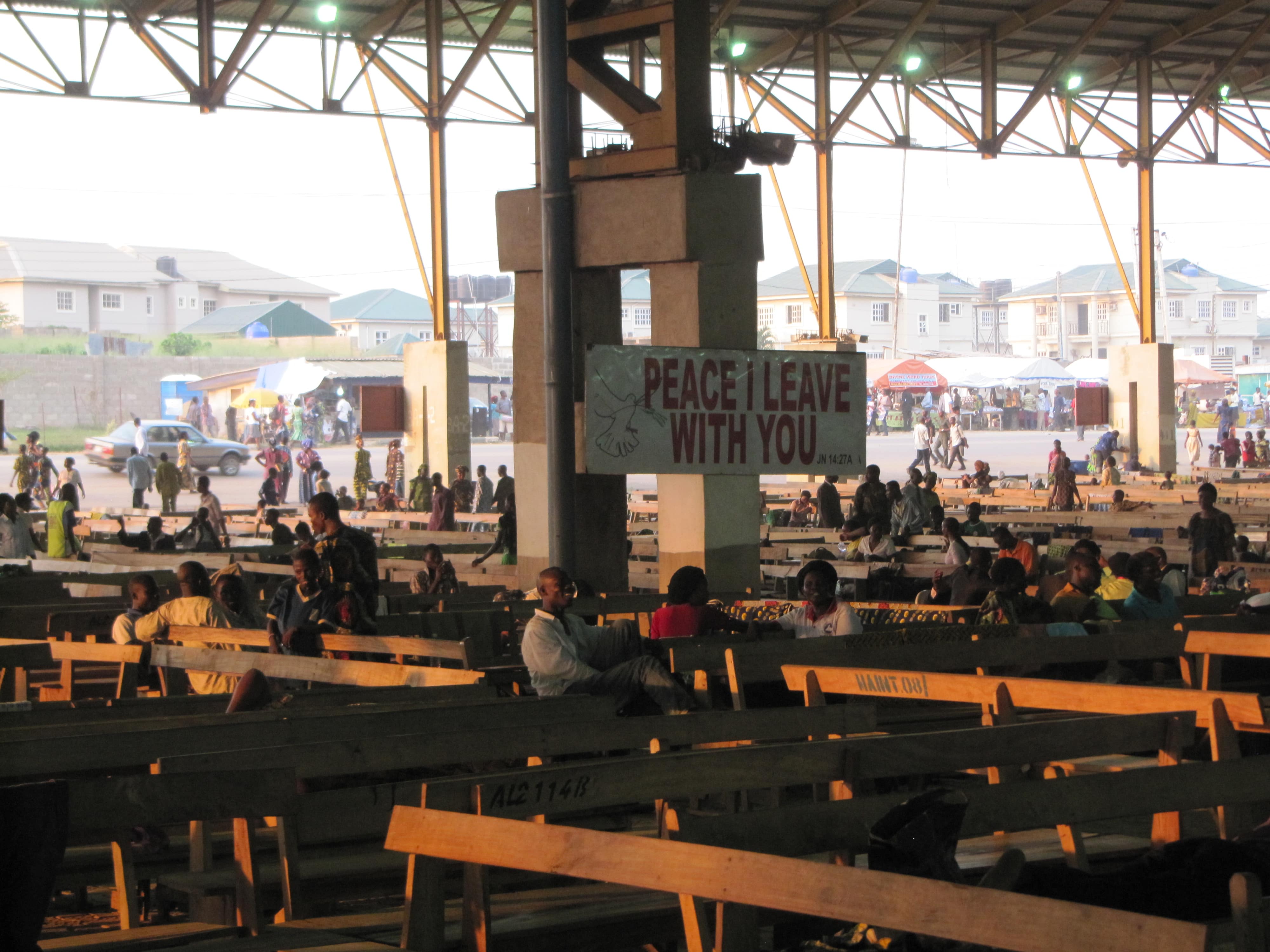
large
align-left
align-right
delete
It must be remembered that the mid-1980s was also the period when Nigeria started to introduce its neoliberal economic policies, urged by the IMF and the World Bank, which involved the commoditization of every aspect of life; social, economic, political, and religious.Nigeria adopted the IMF–World Bank Structural Adjustment Program (SAP) in 1986. One of the new introductions inspired by Adeboye in the early 1980s was the Holy Ghost Service (HGS), a ritual event held on the first Friday of every month.When the first Friday of the month falls on the sixth or seventh day of any month, the event is held on the last Friday of the preceding month. The economic importance of the event, therefore, is that it is held on the Friday closest to when wages are paid to workers and the RCCG is ardent about collecting tithes from HGS attendees. Adeboye informed his followers that he had received divine instruction to commence the event as a “birthday” gift from God for the spiritual welfare of members of the church: through the HGS God would perform miracles for Nigerians whose lifestyles had been ruptured by the aggressive deregulation, privatization, and commercialization programs of the state. However, the inspiration for this event could have sprung from a similar one of the same name held by Kenneth Hagin Snr. to which Adeboye was a regular attendee from 1979. The HGS was also to become a veritable medium of disseminating Adeboye’s newly adopted Prosperity “theology.” Part of the miracle that God was going to channel through the HGS was to redeem the Sin City that was Lagos!
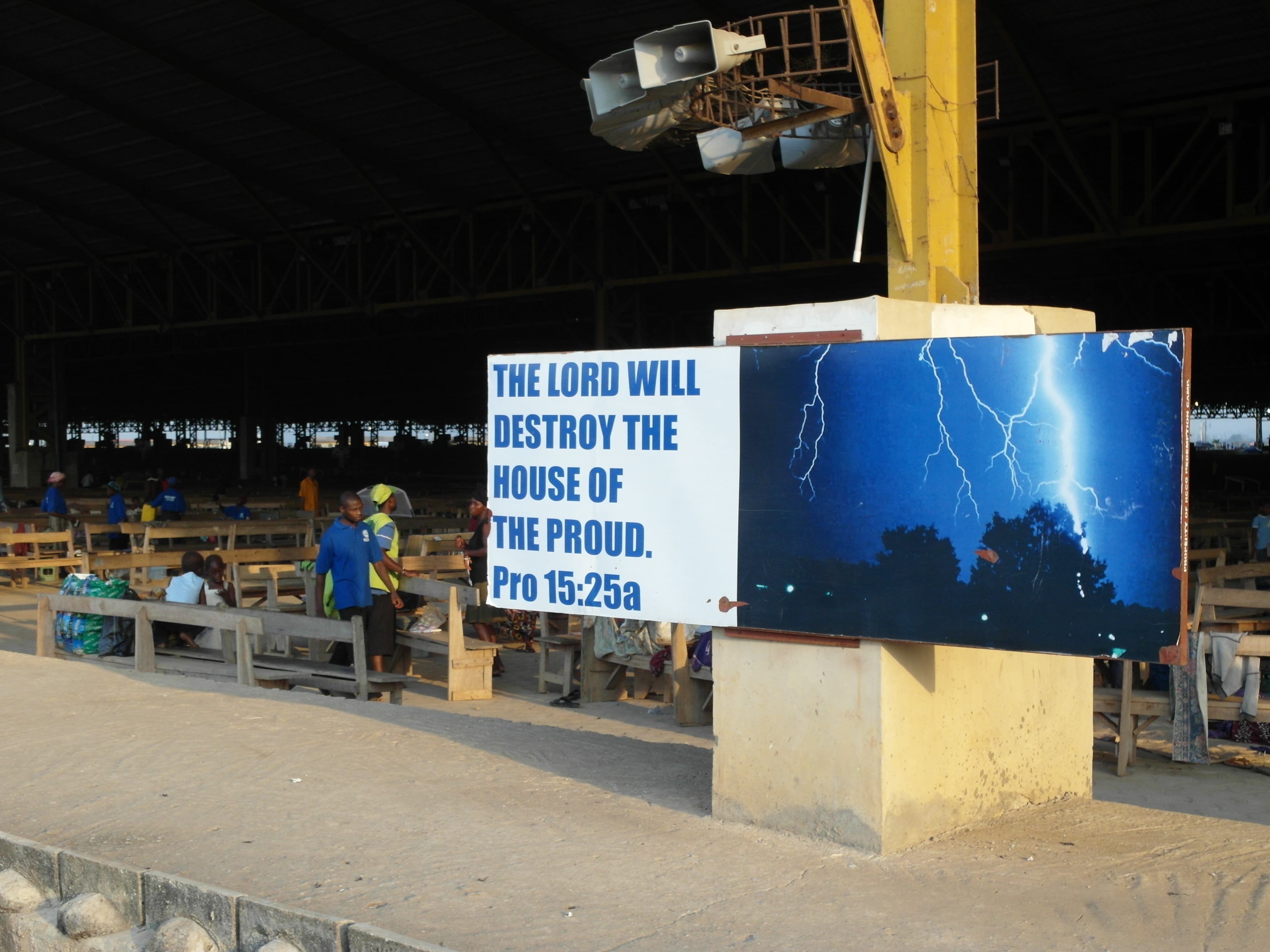
large
align-left
align-right
delete
Obviously, Redemption City, as its owners and their followers call it, is not the first city started by a church; Mannheim in Germany has a similar history.Henderson J. Vernon and Randy A. Becker, “Political Economy of City Sizes and Formation,” Journal of Urban Economics, vol. 48, no. 3 (2000), pp. 453‒84, here p. 471. In Yoruba cosmology, many cities and towns had divine purpose in their establishment, the most important of which is Ile-Ife, the “City of 201 Gods,” over whose soul different religious traditions are still competing.Jacob K. Olupona, City of 201 Gods: Ilé-Ifè in Time, Space, and the Imagination. Berkeley, CA: University of California Press, 2011. In the mind of the Yoruba, the concentration of gods in a specific space makes the environment unique: it is the center of power, knowledge, wealth, and all that humankind desires. A sacred space, therefore, is a site of unusual human attachment since it is intentionally designed to reproduce divine workmanship to benefit humankind, and as a result, people invest in it collective emotions and signification.Shampa Mazumdar and Sanjoy Mazumdar, “Religion and Place Attachment: A Study of Sacred Places,” Journal of Environmental Psychology, vol. 24 (2004), p. 386. Similarly, the creation of “Redemption City” is likened to a centrifugal source of unusual power. For forty years before 1983, the RCCG had held its National Convention—an annual gathering of church members to reflect on church life and new directions—on the premises of the Ebute-Meta church; and this is a period when church leaders and members interact and draw up a new church calendar. For the 1982 event, the Ebute-Meta church site had insufficient space to accommodate the surging numbers; expansion was impossible, as the church compound was bounded on two sides by the lagoon and on the third side by the old and ever-busy Ebute-Meta sawmill. The new leadership of Adeboye and the fresh programs he was introducing into the RCCG were beginning to alter the membership demographic; the new members were now younger, upwardly mobile, and economically ambitious. The church needed a modest property large enough to accommodate its bone-fide members during mass rituals such as the HGS and the annual National Convention. This was the primary reason why, in 1983, the church invested in the purchase of 14.25 acres of land for development as a temporary site of worship. At its inception, the camp served this purpose effectively, considering that it was a “members-only” ritual facility. The initial purchase of land and the construction of the first set of structures within the camp were by direct labor: members of the church pledged various sums of money and many of them were directly involved in the clearing and construction of the makeshift houses and the first auditorium. This brought about the sense of collective ownership, collective responsibility, and collective sentiment for the camp. More importantly, it produced a sense of collective pride and demonstrated material proof of the divine selection of Adeboye as the rightful leader of the church. This sense of achievement fueled a massive media advertising and propaganda campaign,The use of the word “propaganda” here is in accordance with the definition by Matthew G. Stanard: “Propaganda is the production and dissemination of information to help or hinder a particular institution, person, or cause, and the actual ideas concepts and materials produced in such an effort.” Selling the Congo: A History of European Pro-Empire Propaganda and the Making of Belgian Imperialism. London: University of Nebraska Press, 2011, p. 3. in respect of marketing the camp as a sacred space where angels guard and patrol the perimeters, and where interaction between humans and the sacred are focused and intensified. The camp became home for the production and circulation of miracles, a central pillar of the RCCG’s identity, and monument to its figurehead: “the man behind the name,” Adeboye.
Toward the end of the 1990s, particularly during the transition to democratic governance, the church welcomed with open arms the emergent political class. It had already demonstrated it was able to attract large crowds of people to one place, a kind of captive audience for political propaganda. Now it became the “beautiful bride,” courted by gladiatorial political suitors of all hues. The RCCG was the primary platform for the political campaigns of Olusegun Obasanjo, a personal friend and ethnic compatriot of Adeboye, who was (s)elected President of Nigeria in May 1999. Campaigning from the pulpit, Adeboye urged his listeners and followers to vote for Obasanjo because “God has told him a general would rule Nigeria again.” Once Obasanjo became president, Adeboye became his unofficial chaplain, frequently visiting the seat of political power, Aso Rock, for prayers and consultations. The misguided euphoria and irrational exuberance with which the entire Pentecostal community welcomed the idea of a “Christian” president, whom Adeboye had prophesied into office, had a bandwagon effect on the nation. Slowly but steadily, Redemption City became, not a New Jerusalem where pilgrims went to pray and repent of their sins, but a political Mecca where integrity-challenged politicians bribed their way to the pulpit to address worshipper-voters. According to Matthews Ojo, in the 1990s and well into 2000, “it became politically expedient for some African leaders to proclaim their evangelical conversion and Pentecostal experience as political tools to garner support and seek legitimacy.”Matthews A. Ojo, Of Saints and Sinners: Pentecostalism and the Paradox of Social Transformation in Modern Nigeria, Inaugural Lecturer series 227. Ile-Ife: Obafemi Awolowo University Press, 2010, p. 11. Adeboye’s transformation to political prophet made him consultant to the country’s political gladiators, as he could peer into the political future of the country. At the camp, the politicians were the subjects of many prayers that would spiritually reinforce them for the combat ahead. In exchange, the politicians left behind “offerings,” that is, piles of cash and other material goods: politicians do not make donations that leave paper trails; they pay cash and call it a donation to God. If they do not donate cash, they give “gifts,” such as electricity-generating plants, vehicles, or earthmovers. The RCCG under Adeboye is a political-image laundry-structure where shady politicians and business people go, for a social and moral makeover, and/or to seek succor. By associating publicly with Adeboye, they can make claims of “righteous” and “moral” behavior and, therefore, resurface as people with values and principles. According to Matthews Ojo, the manner in which Nigerian Pentecostals have practiced their micro-political activities since 1999 “depicts how the saints could become sinners, and sinners become saints within the public sphere devoid of any standard of morality, but whose elected or anointed officials assume that they have some moral power left that could be exercised legislatively.”Ojo, Of Saints and Sinners, p. 45. The Redemption City is not only a sacred site for believers seeking spiritual encounters but, more importantly, a destination for political pilgrimage which offers shady politicians manufactured “political redemption and anointing”: the dispensation of divine indulgence for a fee (donation, offering, or tithe). What Ebenezer Obadare aptly calls a “Pentecostal presidency”:Ebenezer Obadare, “Pentecostal Presidency? The Lagos-Ibadan Theocratic Class and the Muslim ‘Other,’” Review of African Political Economy, vol. 33, no. 1 (2006), pp. 665–78. that is, the failed and naïve attempt by the Pentecostal class to hijack the country’s presidency under the second Obasanjo term (1999–2007), which was hatched and nurtured at the Redemption Camp under the auspices of Adeboye and the entire RCCG leadership. The resources from the political class also contribute immensely to reshaping the direction and fortune of the RCCG and its camp. Without doubt, therefore, financial contributions from politicians and corporate entities have had an oversized influence on making the Redemption Camp what it is today, even when the church refuses to make public a detailed list of its sponsors and patrons.
Conclusion
The Redemption City is the most important physical landmark of contemporary Pentecostalism in Nigeria. Nigerian Pentecostalism has been fomented in the crucible of the city: and the city, according to the colonial model of modernity and development, is the repository of wealth and other forms of resources; it is where the Christian God is to be found, including His riches, which are material in nature. More than 95 percent of all Nigerian Pentecostal establishments are concentrated in the city. The RCCG under Adeboye has become a formidable purveyor of Prosperity “theology” and this prosperity is to be found in the city. The Pentecostal God loves the city beyond measure and hence it is the locus of social and economic redemption. The doctrinal, organizational, and behavioral character of Nigerian Pentecostalism is structured according to the rhythm of city life and practices. Because, according to the cosmology of Nigerian Pentecostalism, God dwells in the city with all its dysfunctions and disruptions. Even when the RCCG moved outside Lagos to build a camp, it could not get away from the model of the city from which it was running away. This is the case with the RCCG’s Redemption City. The camp, devised initially as a counter-city or an alternate to Lagos, is increasingly following the trajectory of the mother-city, Lagos—the plethora of religiously themed billboards littering it, and pious-sounding street names notwithstanding.
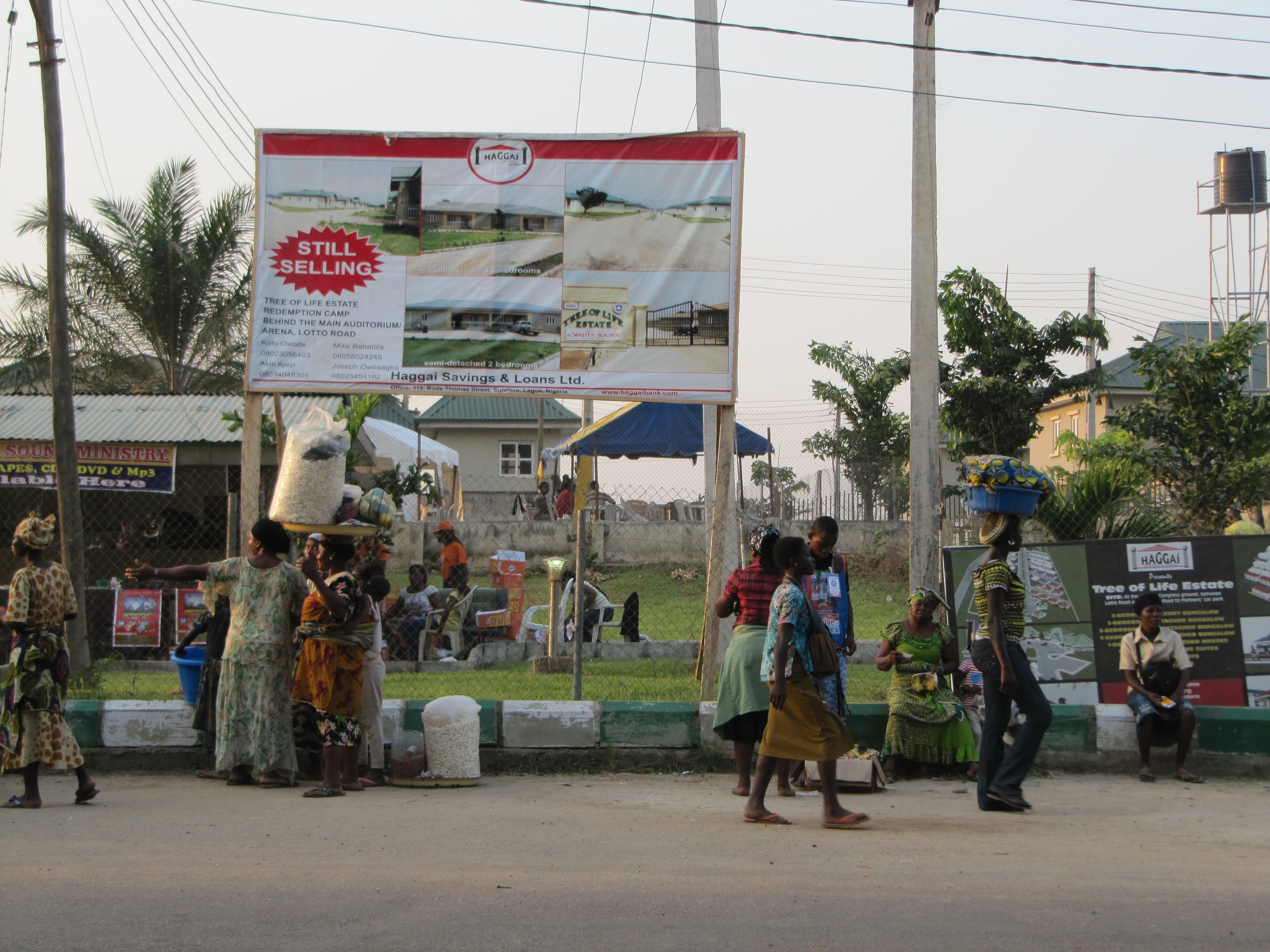
large
align-left
align-right
delete
In the 1990s, the RCCG publicly sought out the rich and powerful of society, handpicking candidates from university campuses and the corporate and professional worlds. In the absence of direct political activity during the military regimes, there was an influx of this caliber of people into the church. The hopes and aspirations of the frustrated middle class migrated from politics to religion, and the RCCG gradually morphed into an enterprise, a sort of public venture, which created diverse forms of social capital. Those who made large investments in the sacred bonds the church offered were promised divine rewards in exchange.David Martin, The Future of Christianity: Reflections on Violence and Democracy, Religion and Secularisation. Surrey: Ashgate Publishing Company, pp. 78, 79; and Godwin Onuoha, “‘Exit’ and ‘Inclusion’: The Changing Paradigm of Pentecostal Expression in the Nigerian Public Sphere,” in Irene Becci et al. (eds), Topographies of Faith: Religion in Urban Spaces. Leiden and London: Brill, 2013, pp. 207–25. These rewards are delivered here on earth in the form of material goods and the good life. Among those welcomed in large numbers into the RCCG were the kleptomaniacs, integrity-challenged, the electorally corrupt, and the corporate and political elites. Some of what they embezzled from the public and corporate entities they presided over, they in turn invested in the church in exchange for symbolic and social capital. These individuals and corporate entities largely funded the City of God of the RCCG. The Redemption City has grown and flourished in the most troubled period of Nigerian political and economic history. Its expansion, structure, and character were conditioned by the social, economic, and political experiences of the period. Nigerian “Pentecostal movements have come to play a central role in urban spaces, where they have displayed a resilient form of associational life in the face of the immense failure of the state.”Onuoha, “‘Exit’ and ‘Inclusion,’” p. 223. The culture of corruption, impunity, and fiscal recklessness, which is responsible for why things are the way they are in Nigeria, has also infiltrated the way that the Redemption City has evolved and been administered. The Redemption City is still expanding and its model has been reproduced elsewhere outside Nigeria. A civil regime that cannot distinguish its fingers from its toes presides over a vast army of the frustrated, marginalized, and unemployed. These citizens include those who exploit the chaos and all those who use religion as an anchor, as well as many other individuals and corporate entities. Under this regime the Redemption City will remain a hub for the exchange of sacred bonds “for a fee,” a place for the acquisition of social and symbolic capital.
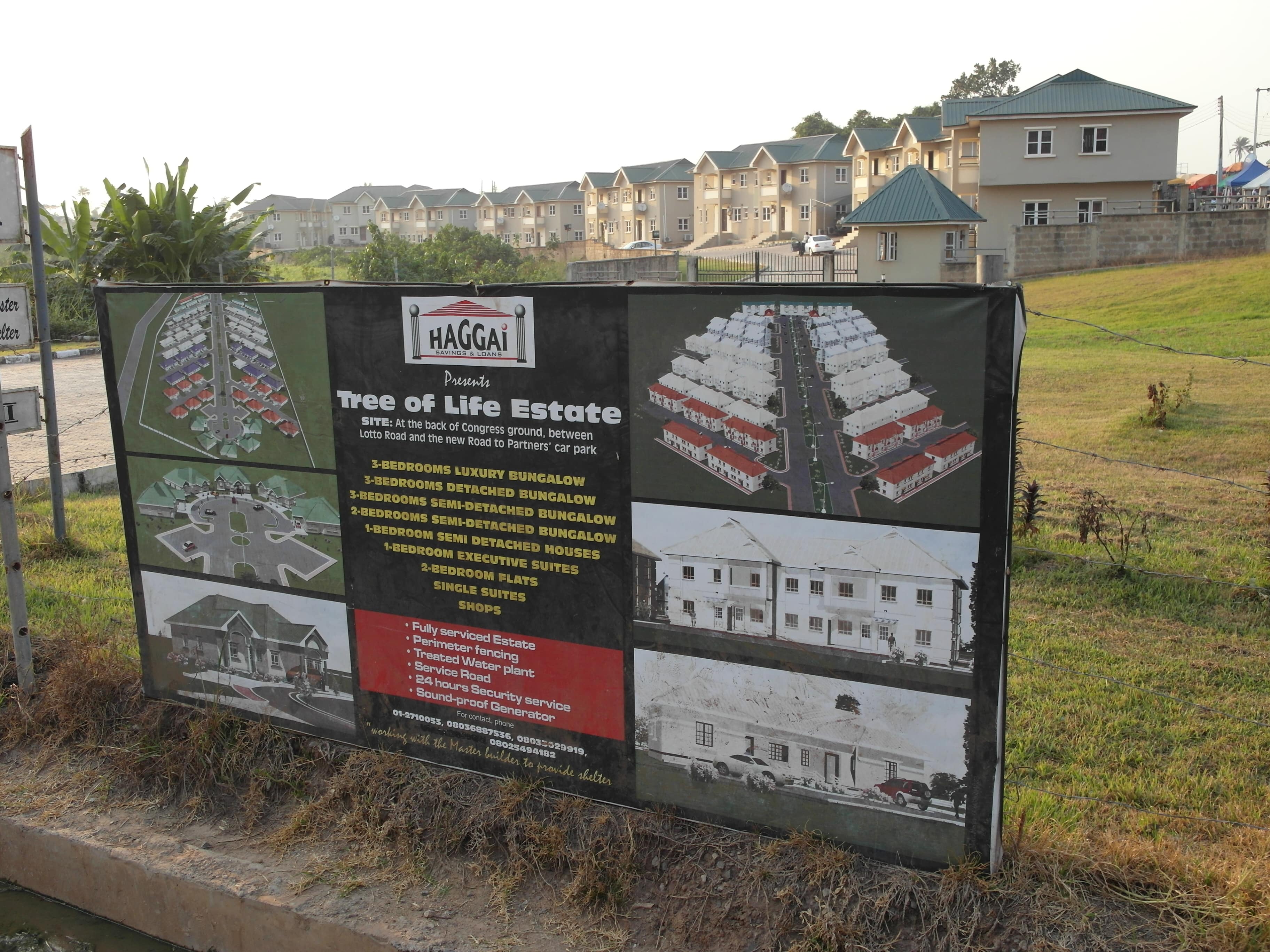
large
align-left
align-right
delete
To what extent can the spatial and social practices of the Redemption Camp be likened to the hypothetical “fundamentalist city”? There is no straight answer. The Redemption City has adopted and adapted the nomenclature of public administration as well as the portfolios of public bureaucracies. For the church, the camp represents a space redeemed from wild animals and evil forces for a plethora of sacralized rituals; some of the practices adopted there redefine the space as other than Lagos. For the church leadership, they are “religion-making,” rather than practicing oppressive governance. Activities at the camp directly impinge on public life in Lagos and elsewhere in the surrounding states, particularly in respect of obstructing the free flow of traffic on public roads. Some have argued that the power of the RCCG should be reassessed according to the degree to which it is able to inconvenience and disrupt public life elsewhere. Furthermore, practically all of the attributes of the hypothetical “fundamentalist city” listed by AlSayyad and Massoumi are present in the Redemption Camp, even to an exceedingly oppressive level. The singular most important difference, however, is that the Redemption Camp is a legal private estate, subject to the organizational style and dictates of its owner. As a private estate, the management of the camp is bound by its rule of faith, and only the constitutionally guaranteed rights of Nigerian citizens can limit its fundamentalist character.
This article is an edited excerpt of Asonzeh Ukah, “Redeeming Urban Spaces: The Ambivalence of Building a Pentecostal City in Lagos, Nigeria,” in: Jochen Becker et al. (eds), Global Prayers: Contemporary Manifestations of the Religious in the City. Zürich: Lars Müller Publishers, 2014, pp. 178‒97. A book by metroZones, the Haus der Kulturen der Welt, and Europa-Universität Viadrina.
Photographs by Stephan Lanz, Redemption City of the Redeemed Christian Church of God, Lagos 2010.